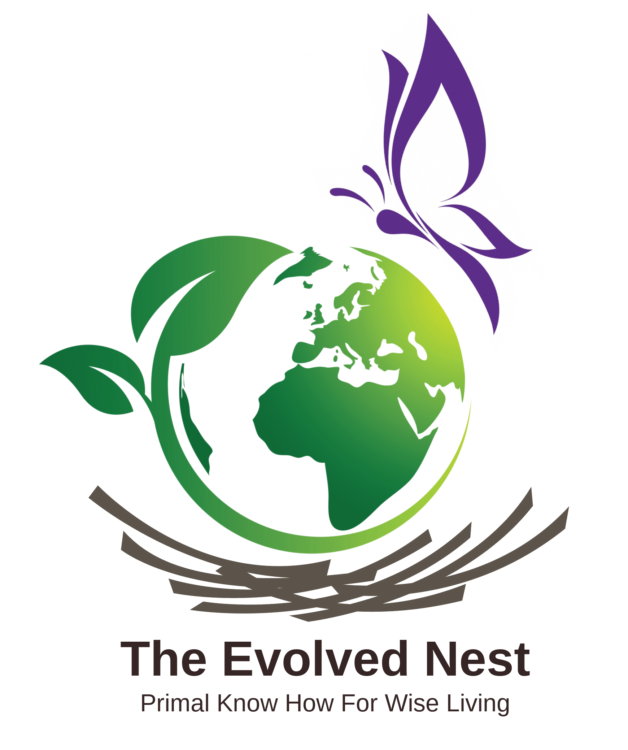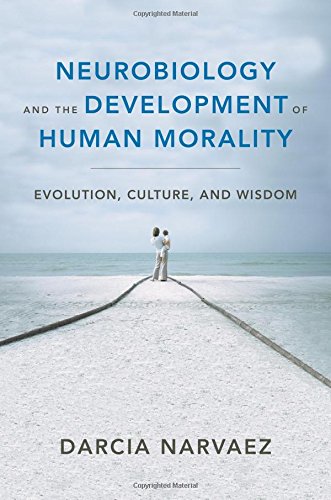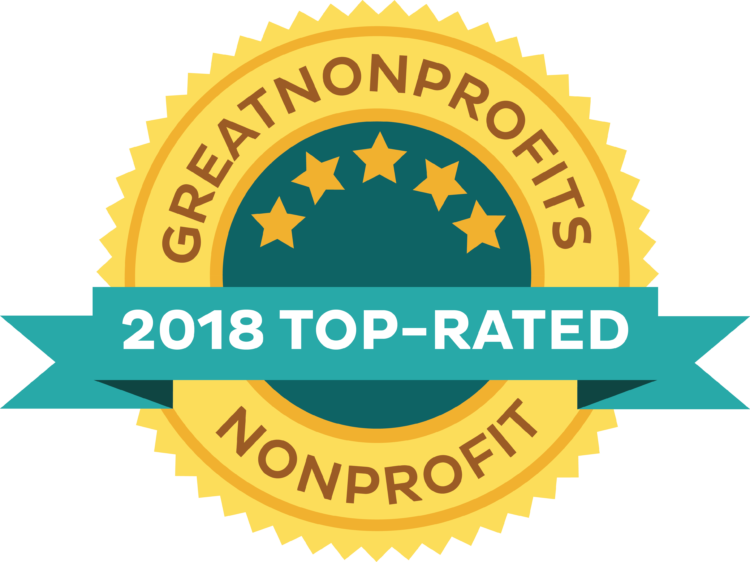The Science And Art Of Mothering: Part Two Of Three
Communities used to know a lot about mothering.
Human biology and sociality are designed to be largely shaped after birth—with early plasticity and extensive epigenetic effects, to a greater extent than for any other hominid (Gomez-Robles et al., 2015). Born with only 25% of adult brain volume, the intensity of the human nest evolved with the maturational schedule of the child which is rapid in the first years of life (taking three decades in total). When children receive evolved-nest care, their well-being and sociality develop optimally because their capacities (governed by the right hemisphere) are scheduled to lay their foundations in the first years of life (Schore, 2013).

We know now more than ever that the child’s body “is the result of mothering and being mothered” (Vaughan, 2015, p. 38). For mammals, who are named for the breastfeeding provided to the young, mothering is essential (i.e., nurturing from mother and others). Initially, the nurturing that mothers and others provide is about unilateral gift-giving and then shared gift-giving as children give to others themselves. This gift economy is built into natural nurturing and child raising: The child is a “product of gift-work” (Vaughan, 2015, p. 39). Mothering, characterized by sensitive caregiving, is essential for endocrine systems, neurotransmitters, stress response, self-regulatory systems and so much more (Narvaez, Panksepp, Schore & Gleason, 2013a).
So much of the brain develops after birth that children’s capacities for social wellbeing are shaped by the particular nest of mothering (mothers and others) they receive. In species-normal conditions, children are ready for reciprocal relations from the beginning. Trevarthen & Reddy (2016) concluded that children are born with capacities to share emotions and intentions with caregivers (studies are usually with mother-child dyads), as observed through films of fetal then baby gestures in in spontaneous communication after birth (Delafield-Butt & Trevarthen, 2013; Trevarthen, 1986a; Trevarthen & Delafield-Butt, 2013; Zoia et al., 2013) as well as in clinical observations of newborn self-awareness and self-regulation(Brazelton, 1979; Brazelton & Nugent, 1995; Nugent & Morell, 2011).
Importantly, we know that parents instinctually want babies to have the best possible start in life, though sometimes they do not know how to provide the care that fosters flourishing. Humanity’s evolved nest provides what the baby’s body and brain expect.
How do motherers nurture or show love in early life? They are attuned to the signals and needs of the infant who moves “with rhythms of prospective awareness from birth, show[s] insight for learning what the world affords, and share[s] their feelings of imaginative vitality in affectionate adventures with other persons” (Trevarthen & Bjorkvold, 2016, p. 28). A child is gradually socialized into her culture by the type of relational interaction in which she partakes. “By three months, a baby may participate in simple conventions of a culture, inviting older playmates to play games with routines and rituals, joining in narratives of purpose with feeling” (Trevarthen & Bjorkvold, 2016, p. 29). Mothering is about engaging and growing full human capacities, and in traditional societies includes a developing a deeper sense of connection with the community and with the larger All (Turnbull, 1984). Mothering brings together the art and science of relational living.
Supported Mothers and Mothering
John Bowlby (1982) identified two attachment systems. The first is the child’s attachment system, which develops during the first year of life, and is typically studied as secure or some form of insecure attachment. Children who are well-mothered develop secure attachment and are better able to handle stress throughout life because, as mentioned, good mothering promotes optimal epigenetic shaping of multiple processes including the Oxytocinergic system that undergirds bond formation in mammals, represented by secure attachment (Atzil, Hendler & Feldman, 2011).
The second attachment system Bowlby identified is the caregiver’s attachment system which reflects neurobiological substrates like the oxytocinergic system that influence the caregiver’s ability to develop attachment with their own children. Adults who report better parenting as children exhibit greater oxytocin indicators (peripheral and brain activation) as well as more sensitive parenting (Feldman, 2012). Animal research shows that well-mothered mothers exhibit more affectionate care, accompanied by higher oxytocin indicators during pregnancy and birth (Champagne, 2008). Caregiver attachment leads to nurturing behaviors that shape the child’s attachment system. In the immediate perinatal period after a naturalistic birth, the mother-child dyad is optimally attuned to bond due to hormonal shifts that promote sensitivity in the dyad; animal models show us that brain reward systems are set to be imprinted immediately after birth, perhaps in both child and mother, making this period significant for biosocial reasons. (See Buckley, 2015, for a review.) (It should be noted that there are other opportunities to foster secure attachment later in development—e.g., Lieberman, Padrón, Van Horn & Harris, 2005). The Baby-Friendly Hospital Initiative (of the World Health Organization, recently adopted in the USA) promotes keeping mother and neonate together, which influences the opportunity for mother-child bonding and for breastfeeding success.
Nurturing behavior reflects the nurturer’s own history, which ideally should also be one of support as motherers (nurturers) incorporate the gift-giving relational experiences they had in early life. That is, when they were nurtured themselves by motherers, it becomes a part of how they relate to others. They learned to cooperate first by receiving from motherers what they needed as embodied creatures, body to body, gradually reciprocating with mini-gift giving back to the motherer with the same type of attentionreceived (shared resonance of feeling, games, and communication) (Vaughan, 2015).

If a mother or caregiver lacked support herself in childhood and in motherhood, she is less likely to convey these supportive types of attention and feeling. Instead, she is more likely to communicate impatience, dismissal, and detachment. She has fewer nurturing skills because of her own lack of experience. Animal studies show that poor mothers breed daughters with worse mothering skills (Weaver et al., 2005; Weaver, et al., 2004; Weaver, Meaney, & Szyf, 2006). Offspring will not grow as well or blossom if this is the home they face.
Hopefully, there is at least one person in each child’s life that “mothers” them, showering love and acceptance, in whose presence they can grow their uniqueness. Extended family life allows for this but so do neighbors, teachers and coaches. Every child needs an ongoing bath of love to flourish.
*Thanks to Genevieve Vaughan for her suggestions.
SERIES
1. Killing Motherhood, the Center of Society
2. The Science and Art of Mothering
3. Allomothering: Our Evolved Support System for Mothers
REFERENCES
Atzil, S., Hendler, T., & Feldman, R. (2011). Specifying the neurobiological basis of human attachment: Brain, hormones, and behavior in synchronous and intrusive mothers. Neuropsychopharmacology, 36(13), 2603-2615.
Bowlby, J. (1969/1982). Attachment and loss: Vol. 1. Attachment (2nd ed.). New York: Basic Books (Original work published 1969).
Brazelton, T. B. (1979). Evidence of communication during neonatal behavioural assessment. In M. Bullowa (ed.), Before Speech: The Beginning of Human Communication. London, Cambridge University Press., pp. 79-88.
Brazelton T. B, and Nugent JK (1995). The Neonatal Behavioural Assessment Scale, 3rd edition. MacKeith Press, London
Brazelton, T. B. and Sparrow, J. D. (2007). The Touchpoints Model of Development. Brazelton Touchpoints Center www.touchpoints.org
Buckley, S.J. (2015). Hormonal physiology of childbearing: Evidence and implications for women, babies, and maternity care. Wasthington, D.C.: Childbirth Connection Programs, National Partnership for Women & Families.
Champagne, F.A. (2008). Epigenetic mechanisms and the transgenerational effects of maternal care. Front Neuroendocrinology, 29(3), 386-397.
Delafield-Butt, J. & Trevarthen, C. (2013). Theories of the development of human communication. In, P. Cobley and P. J. Schultz. (Eds.) Theories and Models of Communication: Handbook of Communication Science, Volume 1, pp. 199-221 Berlin: De Gruyter Mouton.
Feldman, R. (2012). Oxytocin and social affiliation in humans. Hormones and Behavior, 61(3), 380-391.
Gomez- Robles, A., Hopkins, W. D., Schapiro, S. J., & Sherwood, C. C. (2015). Relaxed genetic control of cortical organization in human brains compared with chimpanzees. Proceedings of the National Academy of Sciences, doi: 10.1073/ pnas.1512646112
Narvaez, D., Panksepp, J., Schore, A., & Gleason, T. (Eds.) (2013a). Evolution, early experience and human development: From research to practice and policy. New York, NY: Oxford University Press.

Narvaez, D., Panksepp, J., Schore, A., & Gleason, T. (2013b). The value of using an evolutionary framework for gauging children’s well-being. Evolution, Early Experience and Human Development: From Research to Practice and Policy (pp. 3-30). New York: Oxford University Press.
Nugent, K. and Morell, A. (2011). Your baby is speaking to you: A visual guide to the amazing behaviours of your newborn and growing baby. New York: Haughton Mifflin.
Schore, A.N. (2013). Bowlby’s “Environment of evolutionary adaptedness”: Recent studies on the interpersonal neurobiology of attachment and emotional development. In D. Narvaez, J. Panksepp, A. Schore & T. Gleason (Eds.), Evolution, Early Experience and Human Development: From Research to Practice and Policy (pp. 31-67). New York: Oxford University Press.
Trevarthen, C. (1986a). Form, significance and psychological potential of hand gestures of infants. In J-L. Nespoulous, P. Perron and A. R. Lecours (eds.), The Biological Foundation of Gestures: Motor and Semiotic Aspects (pp.149–202). Hillsdale, NJ: Erlbaum.
Trevarthen, C. (2005). Stepping away from the mirror: Pride and shame in adventures of companionship: Reflections on the nature and emotional needs of infant intersubjectivity, in, C.S. Carter, L. Ahnert, K. E. Grossman, S. B. Hrdy, M. E. Lamb, S. W. Porges, and N. Sachder (eds.), Attachment and Bonding: A New Synthesis. Dahlem Workshop Report 92. Cambridge, MA: The MIT Press. pp.55-84.
Trevarthen, C. (2009). The functions of emotion in infancy: The regulation and communication of rhythm, sympathy, and meaning in human development. In Diana Fosha, Daniel J. Siegel, and Marion F. Solomon, eds. The Healing Power of Emotion: Affective Neuroscience, Development, and Clinical Practice, pp. 55-85. New York: Norton.
Trevarthen, C. (1999). Musicality and the intrinsic motive pulse: Evidence from human psychobiology and infant communication. In Rhythms, musical narrative, and the origins of human communication. Musicae Scientiae, Special Issue, 1999– 2000, 157– 213. Liège: European Society for the Cognitive Sciences of Music.
Trevarthen, C. (2001) Intrinsic motives for companionship in understanding: Their origin, development and significance for infant mental health. Infant Mental Health Journal, 22(1– 2), 95– 131.
Trevarthen, C. (2008). The value of creative art in childhood. Children in Europe, 14, 6– 9.
Trevarthen, C. (2016). From the intrinsic motive pulse of infant actions, to the life time of cultural meanings. In B. Mölder, V. Arstila, & P. Øhrstrøm (Eds.), Philosophy and Psychology of Time. Springer Studies in Brain and Mind, Vol. 9, pp. 225– 265. Dordrecht: Springer International.
Trevarthen, C., & Bjørkvold, J-R. (2016). Life for learning: How a young child seeks joy with companions in a meaningful world. In D. Narvaez, J. Braungart-Rieker, L. Miller, L. Gettler, & P. Hastings (Eds.), Contexts for Young Child Flourishing: Evolution, Family and Society (pp. 28-60). New York, NY: Oxford University Press.
Trevarthen, C. and Delafield-Butt, J. T. (2013). Biology of shared experience and language development: Regulations for the inter-subjective life of narratives. In, M. Legerstee, D. Haley, and M. Bornstein (Eds.) The Infant Mind: Origins of the Social Brain. New York: Guildford Press, pp. 167-199.
Trevarthen, C., & Delafield- Butt, J. T. (2015). The infant’s creative vitality, in projects of self- discovery and shared meaning: How they anticipate school, and make it fruitful. In S. Robson & S. F. Quinn (Eds.), International handbook of young children’s thinking and understanding (pp. 3– 18). Abingdon; Oxfordshire; New York: Routledge.
Trevarthen, C. and Reddy, V. (2016). Consciousness in infants. In S. Schneider and M. Velmans, Eds. Blackwell Companion to Consciousness, Second Edition. Hoboken NJ: Wiley Blackwell. (in press).
Trevathan, W.R. (2011). Human birth: An evolutionary perspective, 2nd ed.. New York: Aldine de Gruyter.
Vaughan, E. (2015). The gift in the heart of language: The maternal source of meaning. Mimesis International.
Weaver, I.C., Cervoni, N., Champagne, F.A., D’Alessio, A.C., Sharma, S., Seckl, J.R., Dymov, S., Szyf, M., & Meany, M.J. (2004). Epigenetic programming by meternal behavior. National Neuroscience, 7, 847-854.
Weaver, I.C., Champagne, F.A., Brown, S.E., Dymov, S., Sharma, S., Meaney, M.J., Szyf, M. (2005). Reversal of maternal programming of stress responses in adult offspring through methyl supplementation: Altering epigenetic marking later in life. Journal of Neuroscience, 25(47), 11045-11054.
Weaver, I.C.G., Meaney, M.J., Szyf, M. (2006). Maternal care effects on the hippocampal transcriptome and anxiety-mediated behaviors in the offspring that are reversible in adulthood. Proceedings of the National Academy of Sciences, 103, 3480-3485.
Worster, D. (1994). Nature’s economy: A history of ecological ideas (2nd ed.). Cambridge, England: Cambridge University Press.
Zoia, S., Blason, L., D’Ottavio, G., Biancotto, M., Bulgheroni, M. and Castiello, U. (2013). The development of upper limb movements: From fetal to post-natal life. PLoS ONE 8(12): e80876. doi:10.1371/journal.pone.0080876
Featured photo by Shutterstock/agsandrew

